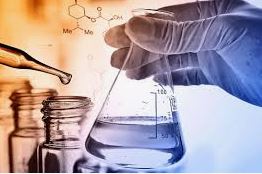The predecessor of biotechnology is modern biology. It has made great progress in the field of techniques for manipulating complex organisms and has improved knowledge related to many traditional processes, which used biological agents in an uncontrolled and deliberate manner. However, it would be wrong to say that the industry modern fermentation biotechnology is the updated version of the old processes of fermentation in the wine or cheese sectors or that it is linked to the discoveries of the 19th century microbiology. In reality, current biotechnology is the result of the application of microorganisms selected and manipulated for specific purposes.

As an example, we will cite two industrial aspects of modern fermentation biotechnology: first, obtaining biomass from activated sludge, then selection and large-scale propagation of specific strains of Clostridium for the production of acetone and butanol. These two processes, created in Manchester almost a century ago, are typical examples of biotechnology in the broad sense and represent the two fields of the biotechnology industry
The beginnings of biotechnology
Biotechnology is in many ways an ancient science. Thus, without knowing or understanding the principles of fermentation or genetics, humanity has used since Antiquity certain biotechnological processes for the production of cheese, bread, wine, for selective breeding of animals, selective cultivation of plants, etc.
Regarding the term “biotechnology”, it was coined by Karl Ereky in 1919 to describe the interaction between biology and technology.
However, biotechnology is not just biology and technology, it is a multidisciplinary effort put in place by mankind since over 5,000 years. With the beginnings of plant cultivation, animal husbandry, beer or wine making and cheese production, it was the application of the principles of biotechnology in the broad sense that we were implementing. In fact, the first stage of biotechnological development is the use of fermentation techniques.

It was not until later in the seventies, that we begin to apply them to the spectacular results of emerging techniques in molecular biology. The term “biotechnology” appeared in the common language relatively recently.
Here are the main areas of biotechnology processes in the past:
1. alcoholic drinks (prehistoric)
2. beer making (3,000 BC)
3. bread making (3,000 BC)
4. elaboration of vinegar (14th century)
5. description of yeast cells by Leeuwenhoek (1689)
6. discovery of the fermentation properties of yeasts by Erxleben (1818).
The traditional applications of biotechnology are also numerous. A simple example is composting, which increases the fertility of the earth through the decomposition of organic matter by soil microorganisms. Other common applications are the production and use of vaccines. The food industry also offers many examples of processes biotechnology with the production of wines, beer, cheese, yogurt, bread, etc.
Modern biotechnology
The current interest of biotechnology lies in the potential implied by the union of processes and biological methods (ancient and modern) and techniques of chemical engineering and electronics. The graphical representation of modern biotechnology would be a tree whose roots are the biological sciences (microbiology, genetics, molecular biology, biochemistry) and the branches, chemical engineering of processes in its broadest sense.
The birth of modern biotechnology is associated with the development of manufacturing processes for penicillin on an industrial scale. During World War II, demand antibiotics was very strong, which gave impetus to the collective efforts of engineers in chemistry and microbiologists, who have sought to mass produce penicillin using fermentation methods. Subsequently, the modern biotechnology industry set itself a goal, to use enzymes. The enzymes are the active ingredients in microorganisms and the real makers of bioreactions.
Unlike microorganisms, enzymes can be manipulated almost analogously to a chemical molecule, they don’t have as many side reactions and do not multiply, which avoids biomass problems. However, this last factor can become inconvenient because most of the time enzymes need coenzymes or mediators to act and once deactivated, they are useless in bioreactions. The first applications of enzymes in the biotechnology industry were manufacturing sweeteners (such as obtaining fructose syrup from wheat) and the use of lipases and proteases in detergents for removing difficult stains.
The use of specific enzymes, often from genetically engineered microorganisms,
announces the second generation of industrial biotechnology (or modern biotechnology), which already clearly integrates microbiology, biochemistry and process engineering.
The latest generation of biotechnology
Biotechnology Begins to Be Considered a Modern Science in the years seventy thanks to advances in molecular biology and genetics. These advances are
the origins of cloning and recombinant DNA techniques that have enabled scientists to better understand the cellular functions and their components in living beings and have made possible development of new methods for isolating mother cells and genes living organisms in order to produce the products of their metabolism in vitro, than before you could only get it with the help of the living organism.
Modern biotechnology does not deny its past, on the contrary since it integrated it into its new methods and techniques. Thus, it encompasses a wide range of products and services that are based on the spectacular current advances in genetic engineering techniques. The ability to manipulate the most basic genetic information, DNA, has resulted in an exponential increase in the number of tech companies recombinant DNA. Many pharmaceuticals are already made using
synthetic enzymes and microorganisms; these are products which contain substances such as insulin, interferon or activating plasmids and which were very complicated or very expensive to manufacture in the past.
However, limiting biotechnology to recombinant DNA techniques is a mistake: the modern biotechnology is more than that, it’s about the application, in many
fields, organizations manipulated or selected using these techniques in order to obtain products with high added value. Consequently, the technologies encompassed in the modern concept of biotechnology are:
1. recombinant DNA (genetic engineering),
2. the cultivation of plant tissues,
3. culture of mammalian cells,
4. biocatalysts,
5. treatment and reuse of waste products via biotechnological methods (bioremediation),
6. fermentations,
7. obtaining biotechnology of fuel and organic raw material as an alternative to petroleum,
8. biotechnological process engineering.
We think it is important to cite two other current applications of biotechnology which, apart the image of the health sector, involve the use of genetic engineering: bioremediation and cleaner technologies.
Toxic and organic waste treatment methods are generally expensive and they can lead to new environmental problems.
Genetic manipulation made it possible to obtain harmless microorganisms and specific enzymes for the degradation and metabolism of toxic residual products. In the processing sector waste, this use of manipulated or selected microorganisms or the enzymes they produce is called bioremediation. Here are some examples of bioremediation techniques: methane and gas from urban solid waste, digestion of plant waste via bacteria, biological purifiers, obtaining biomass from organic by-products, digestion of oil slicks via microorganisms, etc.
On the other hand, different industrial sectors are currently applying biotechnological techniques to replace industrial techniques which are dangerous for the environment or which cause it. pollute. The use of microorganisms or enzymes is a cleaner technique or less polluting and more biodegradable waste. There is thus reduction in situ of harmful effects waste, as well as its quantity, but also very often reducing water costs and energy.
Main biotechnological areas
Biotechnology can be viewed in two different ways: from a horizontal perspective, which distinguishes the techniques used (biotechnology fields) or from a vertical point of view, which focuses on industrial application sectors.
The fields of biotechnology, cited above but which we will now examine in more detail, are as follows:
1. recombinant DNA (genetic engineering),
2. the cultivation of plant tissues,
3. culture of mammalian cells,
4. biocatalysts,
5. treatment and reuse of waste products via biotechnological methods (bioremediation),
6. fermentations,
7. obtaining biotechnology of fuel and organic raw material as an alternative to petroleum,
8. biotechnological process engineering.
